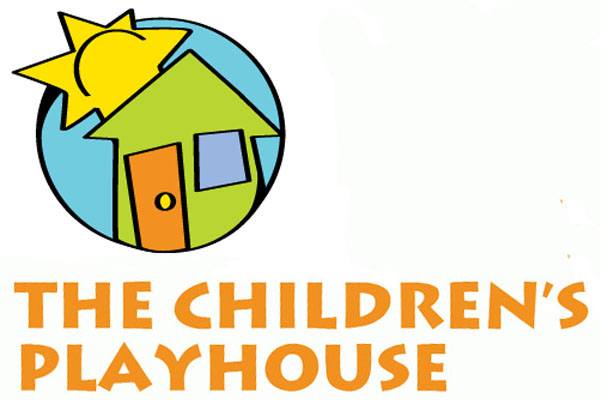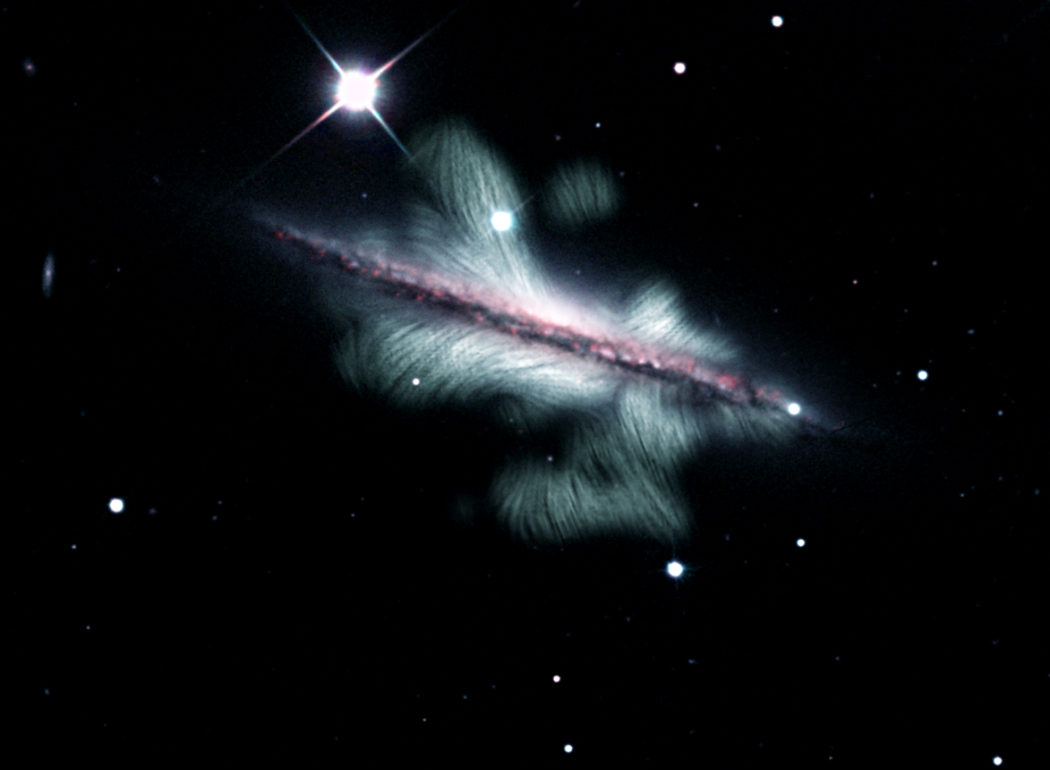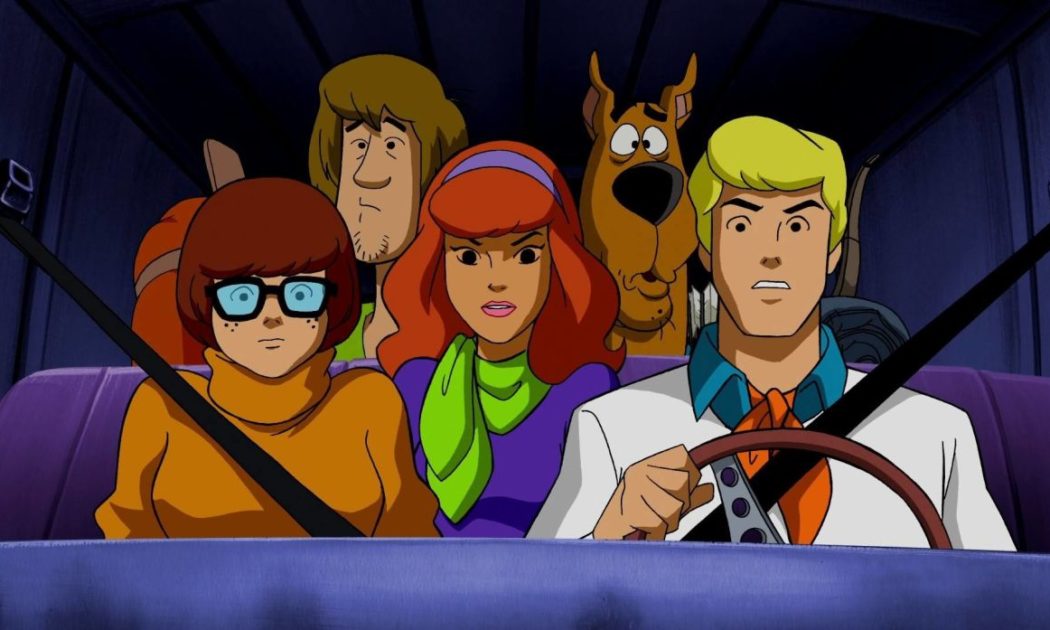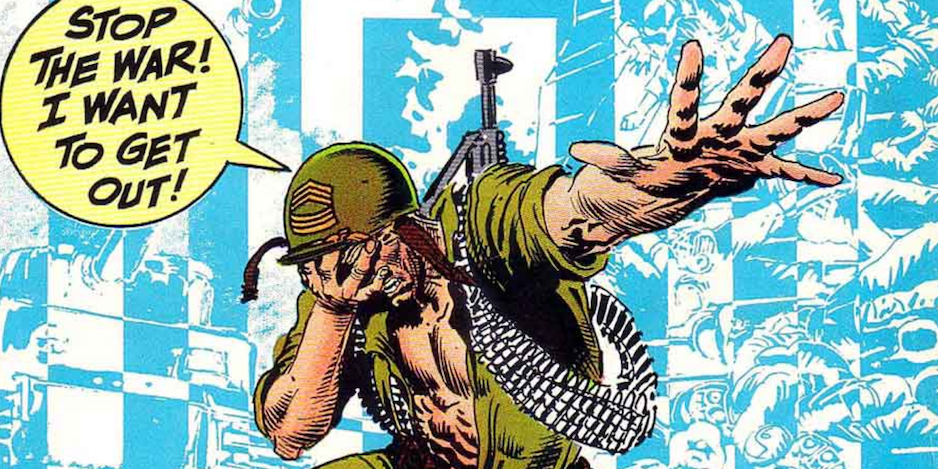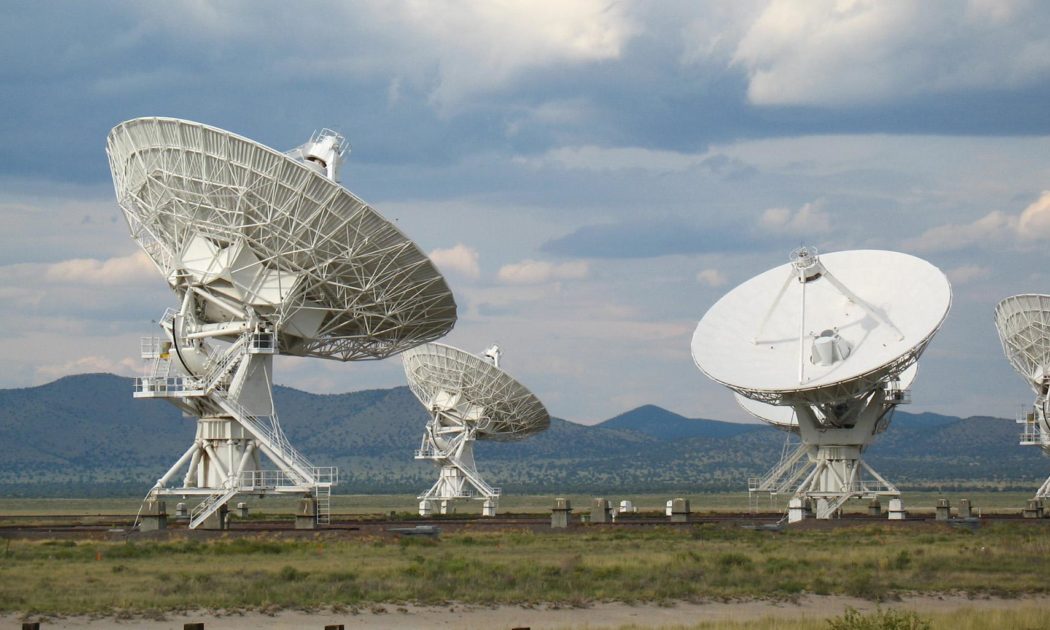
Let’s celebrate a talking dog, make war no more, and explore the stars this week at the Playhouse Comics Club! (Above: A picture taken by the Very Large Array astronomical radio observatory reveals “the huge extent of the magnetic field of a spiral galaxy seen edge-on from Earth.” Check out dozens of other images from the Very Large Array!)
 A farewell to Joe Ruby (1933-2020), who passed away on August 26. Ruby was an animator who began with Walt Disney, and then joined the Hanna-Barbera studio in 1959, a company that developed low-cost cartoons for the television market. At Hanna-Barbera, Ruby met Ken Spears (1938- ), and worked on such TV shows as The Flintstones (from 1960-63), The Yogi Bear Show (1961-62), and The Jetsons (1962-63). In 1977, Ruby partnered with Spears to start an animation studio—appropriately called Ruby-Spears Productions (1977-1996)—that competed with Hanna-Barbera in supplying the then-three major television networks (NBC, CBS, and ABC) with Saturday morning cartoons. Some Ruby-Spears shows include Fangface (1978-79), Thundarr the Barbarian (1980-81), and Alvin and the Chipmunks (1983-90).
A farewell to Joe Ruby (1933-2020), who passed away on August 26. Ruby was an animator who began with Walt Disney, and then joined the Hanna-Barbera studio in 1959, a company that developed low-cost cartoons for the television market. At Hanna-Barbera, Ruby met Ken Spears (1938- ), and worked on such TV shows as The Flintstones (from 1960-63), The Yogi Bear Show (1961-62), and The Jetsons (1962-63). In 1977, Ruby partnered with Spears to start an animation studio—appropriately called Ruby-Spears Productions (1977-1996)—that competed with Hanna-Barbera in supplying the then-three major television networks (NBC, CBS, and ABC) with Saturday morning cartoons. Some Ruby-Spears shows include Fangface (1978-79), Thundarr the Barbarian (1980-81), and Alvin and the Chipmunks (1983-90).
The best-known Ruby-Spears creation and collaboration, however, came out while both men were still working at Hanna-Barbera. Scooby Doo, Where Are You?, about the exploits of four teenagers and a talking dog who solve spooky mysteries, first ran for two seasons in 1969 and 1970, and proved so popular that it would return for later seasons (Scooby-Doo! Mystery Incorporated [2010-2013]), made-for-video movies (Scooby-Doo on Zombie Island [1998], and even live-action versions (Scooby-Doo [2001] and Scooby-Doo 2: Monsters Unleashed [2004]). This year, a new reboot, Scoob!, was released to streaming platforms. Scooby-Doo and his human pals will never age and will outlive us all.
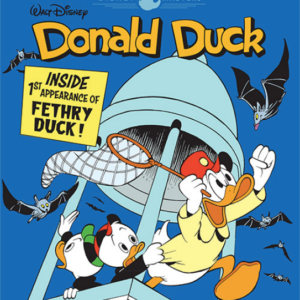 It’s been a while since the Club checked in with Comixology, the main vendor of digital comics. Good news! Fantagraphics is currently distributing a free all-ages Donald Duck comic through Comixology; once you sign up for a site account, you can download the Duck comic (“Inside: First Appearance of Fethry Duck!”) at no cost, here. There are other free comics available on Comixology too: for kids, I suggest Tiny Titans #1, Sensation Comics #1 (Wonder Woman’s origin from 1942!), DC Super Friends, and DC Super Hero Girls. For teens and adults, I recommend two issues of one of the finest superhero series of the past quarter-century, Kurt Busiek and Brent Anderson’s Astro City: in the first, we see the personal sacrifices a hero makes to uphold the common good, and in the second the collateral damage of a cosmic war is revealed. Both are terrific. (Here is the full list of free Comixology comics, but parents be warned: some are only for adults, like issue #1 of The Walking Dead.)
It’s been a while since the Club checked in with Comixology, the main vendor of digital comics. Good news! Fantagraphics is currently distributing a free all-ages Donald Duck comic through Comixology; once you sign up for a site account, you can download the Duck comic (“Inside: First Appearance of Fethry Duck!”) at no cost, here. There are other free comics available on Comixology too: for kids, I suggest Tiny Titans #1, Sensation Comics #1 (Wonder Woman’s origin from 1942!), DC Super Friends, and DC Super Hero Girls. For teens and adults, I recommend two issues of one of the finest superhero series of the past quarter-century, Kurt Busiek and Brent Anderson’s Astro City: in the first, we see the personal sacrifices a hero makes to uphold the common good, and in the second the collateral damage of a cosmic war is revealed. Both are terrific. (Here is the full list of free Comixology comics, but parents be warned: some are only for adults, like issue #1 of The Walking Dead.)
Coming up on October 1 to 4 is Cartoon Crossroads Columbus (CXC), a comic con that, like so many this year, will feature virtual activities and talks rather than an in-person event. CXC is still rolling out their schedule, although their guest list already includes Gene Luen Yang—the artist / writer of American Born Chinese and, most recently, Dragon Hoops—and Fábio Moon and Gabriel Bá, Brazilian twin brothers and the cartoonists on such comics as Daytripper and The Umbrella Academy. (Here is a list of the guests so far.) One event announced for September 26 is a talk and signing with Jeff Smith, CXC organizer and creator of the multi-volume fantasy graphic novel Bone: details here. I’ll do an update once the CXC schedule is finalized. In the meantime, check out friend-of-the-Club Ben Towle’s poster he drew for this year’s CXC (above), where he turned Columbus, Ohio landmarks into a space station!
Over on the NeoText site, Chloe Maveal writes about Joe Kubert and his late-1960s DC war comics set during World War II, including such titles as Our Army at War (starring Sgt. Rock) and DC Star Spangled War Stories. Maveal points out that these Kubert-edited (and often Kubert-drawn) stories end with the line “Make War No More,” representing Kubert’s attempt to de-glamourize war, even World War II, as U.S. troops were fighting in Vietnam. Maveal’s article is full of incredible, explosive battle images that might not be appropriate for young children. (Thanks to Clark Burscough for the link!)
This final item isn’t comics- or animation-related, but it should appeal to the brainy nerd in all of us. The Very Large Array Telescope facility in New Mexico, run by the National Radio Astronomy Observatory, studies the radio wavelengths emitted from stars, planets, galaxies, and other cosmic phenomenon in order to reveal “otherwise hidden characteristics of everything in the universe.” During the pandemic, the scientists at the Very Large Array have begun to offer virtual, free, all-ages tours of the facility, offering an in-depth look at the radio telescope and a survey of the field of radio astronomy: “This hour-long tour includes an introduction to the history and science of the Very Large Array, video segments that will transport the audience to parts of the observatory otherwise off-limits to the public, and an appearance by one of the telescope operators. A brief Q & A will follow.”
The next Very Large Array virtual tour is tomorrow, Saturday, September 12 from 3-4pm (Eastern Standard Time), and you must register for the event here. And don’t worry if you’re reading this after September 12: the tours happen every month.
This weekly blog post is written and compiled by Craig Fischer. To send along recommendations, ideas, and comments, contact Craig at [email protected] [.]
